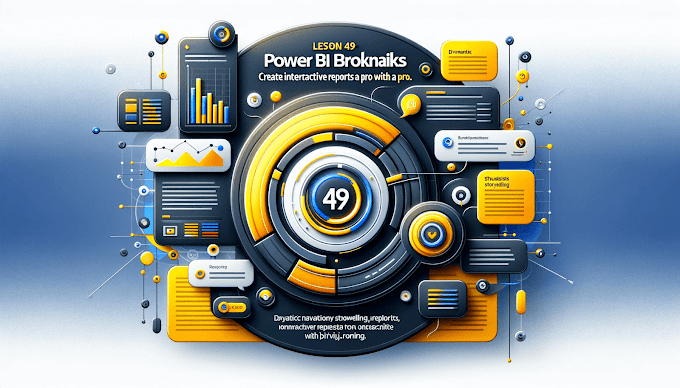Welcome back to Virvijay.com, your trusted platform for learning Power BI. As you work with Power BI to create stunning dashboards and insightful reports, you might encounter performance issues, especially when dealing with large datasets or complex calculations.
In this blog, we’ll share practical tips and techniques to optimize Power BI reports, ensuring they load faster, respond quicker, and provide a smooth user experience.
Why Report Performance Matters
A slow Power BI report can lead to:
- User Frustration: Long loading times reduce engagement.
- Inefficiency: Delays in accessing data can hinder decision-making.
- Resource Overuse: Unoptimized reports can consume unnecessary system resources.
Optimized reports ensure data is accessible, interactive, and insightful without delays.
1. Simplify Your Data Model
The foundation of any Power BI report is the data model. A clean and efficient data model improves performance significantly.
Best Practices:
- Remove Unnecessary Columns: Keep only the fields required for your analysis.
- Example: If you don’t need a “Notes” column, exclude it during data import.
- Reduce Cardinality: Use aggregated or categorized fields instead of high-cardinality data.
- Example: Instead of a full timestamp, use Date and Hour columns separately.
- Avoid Bi-Directional Relationships: Use single-direction relationships unless absolutely necessary.
Tool Tip:
Use the Model View in Power BI Desktop to identify and remove unused fields or relationships.
2. Optimize DAX Calculations
Complex DAX measures and calculated columns can slow down your report.
Tips for Writing Efficient DAX:
1. Use Measures Instead of Calculated Columns:
- Calculated columns are stored in the data model, increasing file size.
- Measures are calculated dynamically, saving space and improving speed.
2. Avoid Repeated Calculations:
- Use variables to store results of repeated expressions.
- Example:
DAX
Total Sales =
VAR BaseSales = SUM(Sales[Amount])
RETURN BaseSales * 1.1
3. Use Aggregate Functions Wisely:
- Replace complex row-level operations with efficient aggregate functions (e.g., SUMX, AVERAGEX).
3. Enable Query Reduction
Power BI offers settings to reduce unnecessary queries, especially when working with slicers and filters.
How to Enable Query Reduction:
- Go to File > Options > Query Reduction.
- Enable features like:
- Delay visuals until all slicers are applied.
- Add an "Apply" button for slicer changes.
This prevents Power BI from recalculating visuals every time a slicer is changed.
4. Optimize Visuals and Pages
Too many visuals or unnecessary complexity can slow down report rendering.
Best Practices for Visuals:
1. Limit the Number of Visuals Per Page:
- Aim for fewer than 10 visuals per page.
2. Use Summary Tables:
- Replace detailed tables with aggregated views.
3. Avoid Overlapping Visuals:
- Avoid stacking visuals unnecessarily; it increases rendering time.
Tool Tip:
Enable Performance Analyzer in Power BI Desktop (View Tab) to identify which visuals take the longest to load.
5. Use Aggregations for Large Datasets
Aggregations let you summarize large datasets, reducing the amount of data Power BI processes.
Steps to Create Aggregations:
- In Power BI Desktop, go to Model View.
- Select a table and click Manage Aggregations.
- Define aggregation rules (e.g., sum, average) for specific columns.
This reduces query load by retrieving pre-aggregated data instead of raw data.
6. Optimize Data Refresh
Efficient data refresh practices ensure your reports are up-to-date without unnecessary delays.
Best Practices:
1. Use Incremental Refresh:
- Instead of refreshing the entire dataset, refresh only new or updated data.
- Example: Refresh the last 3 months of sales data instead of all years.
2. Schedule Refresh During Off-Peak Hours:
- Avoid peak working hours for scheduled refreshes.
Tool Tip:
Set up Incremental Refresh in Power BI Service by enabling it in Dataflow Settings.
7. Leverage Composite Models
Composite models allow you to combine DirectQuery and Import modes for improved performance.
How to Use Composite Models:
1. In Power BI Desktop, set some tables to DirectQuery mode and others to Import mode.
- Use Import Mode for frequently used reference data.
- Use DirectQuery Mode for large datasets that change often.
8. Optimize Data Sources
The performance of your data source affects your report’s speed. Optimize queries at the source level before importing into Power BI.
Tips for Optimizing Data Sources:
1. Write Efficient SQL Queries:
- Use SELECT statements to fetch only the required columns and rows.
2. Use Indexing in Databases:
- Ensure your database tables are indexed for faster querying.
3. Pre-Aggregate Data:
- Create summary tables in your database for commonly used metrics.
9. Compress Your Data Model
Reducing the size of your data model can significantly improve performance.
How to Compress Data:
- Avoid high-cardinality fields like GUIDs.
- Use Whole Number data types instead of decimals where possible.
- Remove unnecessary columns and rows during data import.
10. Test and Monitor Report Performance
Power BI provides tools to help you monitor and test the performance of your reports.
Steps to Test Performance:
- Enable Performance Analyzer in Power BI Desktop.
- Click Start Recording and interact with your report.
- Review the performance of visuals, queries, and DAX calculations.
Monitor in Power BI Service:
- Use the Usage Metrics Report to analyze report usage patterns.
- Identify slow-loading pages or reports for further optimization.
What’s Next?
With these optimization techniques, you can create Power BI reports that are fast, efficient, and user-friendly. In our next blog, we’ll explore Embedding Power BI Dashboards in Applications, helping you integrate Power BI into your web and mobile platforms.
Final Thoughts
Optimizing Power BI reports is a continuous process that pays off in better user experience and quicker decision-making. By applying these techniques, you’ll ensure your reports are not only visually stunning but also lightning-fast.
At Virvijay.com, we’re here to support your journey to becoming a Power BI expert. Don’t forget to share this blog with your network and stay tuned for the next one!
Write us@ [support@virvijay.com]







